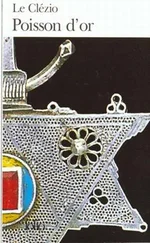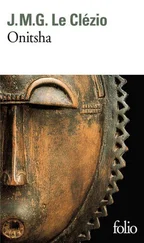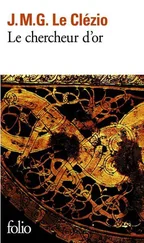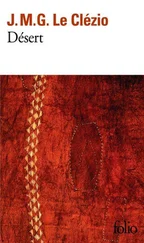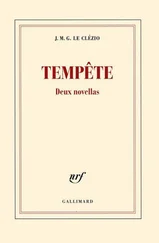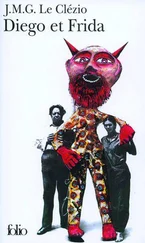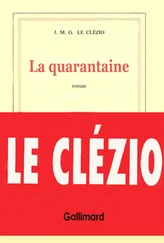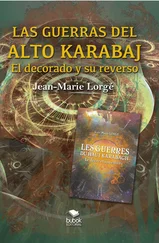“God forbid!” said Dona Firmina, crossing herself. “The things there are!”
“What’s all this now?” Uncle Zé muttered.
“It’s true. One day in Pirambú I saw a little girl with empty eyes and her mother, a Peruvian, told me that’s who it was. They’s gringos , always three of them together, two men and a blonde woman, with white coats, like doctors. They drive slowly into the middle of the favelas, in a Nissan Patrol with tinted windows, and when they see children alone, they offer to buy them a lemonade or a guaraná , then they take them to a quiet place and remove their eyes or the fat from their bodies, sometimes both …”
“The fat?” Uncle Zé asked in disgust, his skepticism suddenly shaken. “But whatever for?”
“Beauty products for the Americans and their friends. The oil from caboclos is very good for white people’s skin, it makes it look younger, smoother, you see. But it’s also used to grease precision instruments and to protect the space shuttle from cosmic rays. NASA need tons of it, it costs more than gold. So our government lets them get on with it, to pay off their foreign debt. It’s like that all over Latin America. Before they didn’t used to take the skinny ones, but now they’re less choosy.”
“And the eyes?”
“The eyes are for transplants. My neighbor’s little girl was lucky, they didn’t take her fat. Otherwise she’d be dead. When they found her, her eyes were bandaged and the orbits stuffed with cotton wool; and she had a fifty dollar note stuck down her underpants.”
“God in heaven!” Firmina said, close to tears. “Fifty dollars for a person’s eyes!”
“I was also told they took hearts or kidneys, and that there were even expensive restaurants in São Paulo where they serve human flesh to policemen and soldiers.”
“It’s the end of the world,” said Uncle Zé gloomily. “I can’t believe it. If that’s the way things are, then there’s no hope: none at all …”
“Don’t worry, Zé. I watch out for them, for Nissan Patrols, and the day I see one I’ll fucking well send it up in flames, the car and the bastards inside it!”
His lips were twisted in a horrible grimace that persisted for a while after he stopped speaking. Dona Firmina crossed herself again to help make it disappear.
The Fountain of the Four Rivers: how Kircher forced his detractors to make restitution. Which also deals with the symbolism of shade & light
 BERNINI WAS A bright, perspicacious & extremely courteous man, despite an inclination to let himself get carried away that his immense talent did not justify but almost always made forgivable. Short & stocky, simply dressed on all occasions, he scarcely spoke at all & was regarded as a hypochondriac by those who did not have the rare honor of being one of his friends. When he did manage to overcome his natural shyness, he spoke freely & with such charming volubility that he enchanted his circle of friends with his imaginative & lively mind. He was attracted by Kircher’s erudition, as Kircher was by the skill he demonstrated in his art. The two men very quickly became friends, which was of great advantage in the development of the plans for the fountain.
BERNINI WAS A bright, perspicacious & extremely courteous man, despite an inclination to let himself get carried away that his immense talent did not justify but almost always made forgivable. Short & stocky, simply dressed on all occasions, he scarcely spoke at all & was regarded as a hypochondriac by those who did not have the rare honor of being one of his friends. When he did manage to overcome his natural shyness, he spoke freely & with such charming volubility that he enchanted his circle of friends with his imaginative & lively mind. He was attracted by Kircher’s erudition, as Kircher was by the skill he demonstrated in his art. The two men very quickly became friends, which was of great advantage in the development of the plans for the fountain.
After several weeks’ work Kircher showed Bernini & the Pope an initial design, developed from a sketch by Francesco Borromini. Its aim was to represent the four regions of the world through the biggest known rivers, thus subtly recalling the four original rivers of the Garden of Eden. The Ganges, the Danube, the Nile & the Plate were to be personified by four marble colossi, each accompanied by emblematic animals. As for the obelisk at the center of the monument, it would in itself encapsulate all theology & sacred knowledge. Kircher was also proposing to channel the water from Rome’s best spring, the Acqua Vergine , to it, thus giving the fountain a natural meaning of purification.
These preparatory sketches aroused fierce discussion & my master had to defend every one of his ideas, point by point. But the design was accepted without amendment & Bernini immediately set about conceiving a composition worthy of the marble & chisel. That left, however, several physical problems: the restoration of the obelisk, its transport to the Circus Agonalis, its erection & the deciphering of the hieroglyphs. The obelisk found in the Circus Maximus was in a very poor state. Abandoned for centuries to the vagaries of the weather, it had suffered serious mutilation. For days we scoured the area around the stone needle looking for missing pieces, but we did not, alas, recover enough to complete the inscription we were working on. Moreover, certain passages that were still in place had been erased by the weather, leaving us with the question of whether to reconstitute the inscription by intelligent guesswork or to accept these ugly blemishes. The former seemed, if not impossible, then at least rather bold to Athanasius.
We therefore sent out an appeal to all the antiquaries of the city to buy back, out of the funds provided by Innocent X, any inscribed fragments of the obelisk, if they could be found. Kircher recovered a certain number but he encountered several wily collectors who refused to sell them, or even to provide my master with a copy. From an indiscreet remark by Signore Manfredo Settala, I learned that this rebuff did not come from a desire to push up the price, but from the machinations of those who, doubting my master’s abilities, were challenging him in his efforts to restore the lost hieroglyphs. They hoped to be able to unmask him as an imposter by comparing his figures with those they had kept in their possession.
I informed Kircher & Bernini of this cabal. The sculptor fell into a rage, inveighing against those who had the effrontery to disobey the Pope & weave such malicious plots. Kircher remained thoughtful. “Perhaps,” he said at last, after we had gone on at him about this, “perhaps it would be better to leave the few lacunae in the inscription blank … Not that I am afraid to take up the challenge thrown down by these doctors of doltishness, but there is a great difference between translating a text and restoring it. As in any language, several signs can express the same thing, save for a slight shade of meaning. Just imagine I made a mistake, however minor, & a scandal ensued, tarnishing my name, that of the Church & even the favor our Order enjoys with the Pope.”
In an impassioned outburst Bernini insisted my master should confound his detractors & he did this in such friendly & confident terms that he managed to persuade him. Kircher took a copy of all the legible characters on the obelisk & on the retrieved fragments, then shut himself away in his study. As for Bernini, he fitted the obelisk into a device allowing it to be turned horizontally around its axis and started repairing the breaks. In order to avoid disfiguring it at all, he refused to use any cement or even iron pins &, in stone similar to that of the Egyptian monument, sculpted replacements so ingeniously that they fitted their respective places precisely.
Invited to assess the result of these efforts, Kircher went into raptures over Bernini’s skill. Never at any time had such perfect work been seen! All that was left was to have the missing hieroglyphs carved, those copied from the fragments in our possession, which it would have been impossible to reinsert into the obelisk without damaging the beauty of the whole, & those, fewer as it happened, that Athanasius had to rewrite. This task was given to the sculptor Marco Antonino Canino & finished in 1645; Kircher’s detractors were routed, for the symbols he had drawn corresponded exactly to the originals they had refused to divulge to him. They were therefore compelled to make a virtue of necessity & agree that my master, guided by the Holy Ghost, had truly uncovered the key to that enigmatic language.
Читать дальше

 BERNINI WAS A bright, perspicacious & extremely courteous man, despite an inclination to let himself get carried away that his immense talent did not justify but almost always made forgivable. Short & stocky, simply dressed on all occasions, he scarcely spoke at all & was regarded as a hypochondriac by those who did not have the rare honor of being one of his friends. When he did manage to overcome his natural shyness, he spoke freely & with such charming volubility that he enchanted his circle of friends with his imaginative & lively mind. He was attracted by Kircher’s erudition, as Kircher was by the skill he demonstrated in his art. The two men very quickly became friends, which was of great advantage in the development of the plans for the fountain.
BERNINI WAS A bright, perspicacious & extremely courteous man, despite an inclination to let himself get carried away that his immense talent did not justify but almost always made forgivable. Short & stocky, simply dressed on all occasions, he scarcely spoke at all & was regarded as a hypochondriac by those who did not have the rare honor of being one of his friends. When he did manage to overcome his natural shyness, he spoke freely & with such charming volubility that he enchanted his circle of friends with his imaginative & lively mind. He was attracted by Kircher’s erudition, as Kircher was by the skill he demonstrated in his art. The two men very quickly became friends, which was of great advantage in the development of the plans for the fountain.
